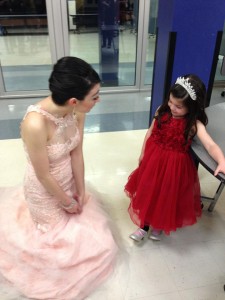November’s astrological energies will provide us the opportunity to wrap up some of 2019’s business and clear our slates for a powerful beginning to 2020. Mercury will be retrograde most of the month, stationing direct on the 20th; however, we’ll be in the “shadow phase” of this phenomenon until December 7, so it will be best to postpone major decisions and to wait to initiate new directions in our lives after this date. The outer planets will be positioning themselves to activate a rebirth of sorts as the year closes out.
On a global scale, we can expect big changes to longstanding systems, particularly related to government and business. The imminent conjunction between Saturn and Pluto, building to exact in mid-January 2020, can be seen as a practical follow up to the years 2011-17, when Uranus and Pluto were in a tense square. During those years, pressure began to build as societies strained against the burden of oppressive structures. Since that time, it has been more difficult to turn a blind eye to injustice, as the planet Pluto forces us to address unpleasant truths. Uranus, also known as the “great awakener,” offered a rebellious energy that motivated people to reject the status quo and develop innovative solutions. Now, Saturn and Pluto join forces in practical Capricorn to build a better foundation for sustainable living. But, like any birth, the new beginnings brought forth by this conjunction will likely be long and arduous.
Jupiter will conclude its journey through Sagittarius this month, preparing to ingress into Capricorn on the 2nd. With this planet of luck and opportunity moving forward in the sign it rules, we will be offered the optimism needed to persevere through the challenges presented to us. Once Jupiter exits Sagittarius, it won’t visit this sign again for another 12 years, so make the most of these positive energies that are particularly well suited to acquiring knowledge and bridging cultural gaps.
PLUTO AND SATURN HEADING TOWARDS EXACT CONJUNCTION
Pluto and Saturn are still four to five degrees away from exact conjunction this month, but with both of these planets in direct motion, we will be feeling their full expression manifesting change in the . . . . .
SATURN-NEPTUNE SEXTILE ENCOURAGES PRACTICAL MYSTICISM
The favorable sextile between Saturn and Neptune will continue this month and be exact between the 8th and 12th. This will be a beneficial energy for . . . . .
The exact time of the November 26 New Moon is 10:06 A.M. Eastern Standard Time. The first 8 hours after the New Moon is exact are the most powerful for wishing, but up to 24 hours later will still work. For the exact best times for writing your wishes during any month’s New Moon, check out www.janspiller.com within the three days prior to each New Moon.
Members can LOGIN HERE to read the full column.
Non-members can check out the Benefits of Membership here. Membership starts at just $4.95 and you may easily cancel anytime.









